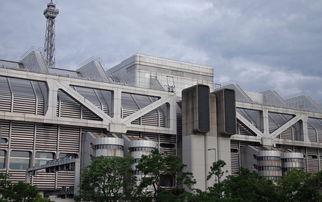Agriculture has been the backbone of human civilization since time immemorial. It is the industry that feeds the world, clothing us, and providing raw materials for countless other products. However, as we step into the 21st century, the agricultural sector is facing unprecedented challenges. Climate change, resource depletion, and a growing global population demand a reevaluation of traditional farming practices. The future of agriculture lies in embracing innovation and sustainability to ensure food security and environmental preservation.
Innovation in agriculture is not a new concept. From the development of the plow to the advent of genetically modified organisms (GMOs), farming has always been a field of continuous improvement. Today, technological advancements are opening up new possibilities for increasing yields, reducing waste, and improving the overall efficiency of farming operations.
Precision agriculture is one such innovation that is transforming the way we farm. By using GPS technology, sensors, and data analytics, farmers can monitor and manage their crops with unprecedented accuracy. This allows for targeted application of fertilizers, pesticides, and water, reducing costs and environmental impact while maximizing crop yields.
Another area of innovation is vertical farming, which involves growing crops in stacked layers, often in controlled environments. This method can significantly increase the amount of produce that can be grown in a given space, making it particularly useful in urban areas where land is scarce. Vertical farming also reduces the need for transportation, as produce can be grown close to where it will be consumed, further cutting down on carbon emissions.
Aquaponics and hydroponics are other innovative farming methods that do not rely on soil. These systems use water to deliver nutrients directly to plant roots, which can lead to higher yields and less water usage compared to traditional soil-based farming. They also offer the advantage of being able to grow crops year-round, regardless of outdoor weather conditions.
However, innovation alone is not enough. For agriculture to truly thrive in the future, it must also be sustainable. This means farming practices must be designed to meet the needs of the present without compromising the ability of future generations to meet their own needs.

Sustainable agriculture involves a holistic approach that considers the environmental, social, and economic aspects of farming. It includes practices such as crop rotation, which helps to maintain soil fertility and reduce the need for chemical fertilizers; integrated pest management, which minimizes the use of harmful pesticides; and agroforestry, which combines trees with crop or livestock production to create a more diverse and resilient ecosystem.
One of the most pressing issues in sustainable agriculture is the reduction of greenhouse gas emissions. Agriculture is responsible for a significant portion of global emissions, primarily through deforestation, livestock production, and the use of synthetic fertilizers. By adopting practices that increase carbon sequestration in the soil, such as no-till farming and the use of cover crops, farmers can help mitigate climate change.
Water conservation is another critical aspect of sustainable agriculture. With freshwater resources becoming increasingly scarce, it is essential to use water efficiently. Drip irrigation and other water-saving technologies can significantly reduce water usage while maintaining or even increasing crop yields.
Moreover, sustainable agriculture also involves ensuring the well-being of farmers and farmworkers. This includes providing fair wages, safe working conditions, and access to education and healthcare. By supporting the people who work in agriculture, we can create a more equitable and resilient food system.
In conclusion, the future of agriculture is a complex tapestry woven from threads of innovation and sustainability. By embracing new technologies and practices that are both efficient and environmentally friendly, we can ensure that agriculture continues to nourish the world while also preserving the planet for future generations. It is a challenge that requires the collective effort of farmers, scientists, policymakers, and consumers alike. Only through this collaborative approach can we hope to achieve a future where agriculture is not just a means of survival but a model of stewardship and sustainability.









